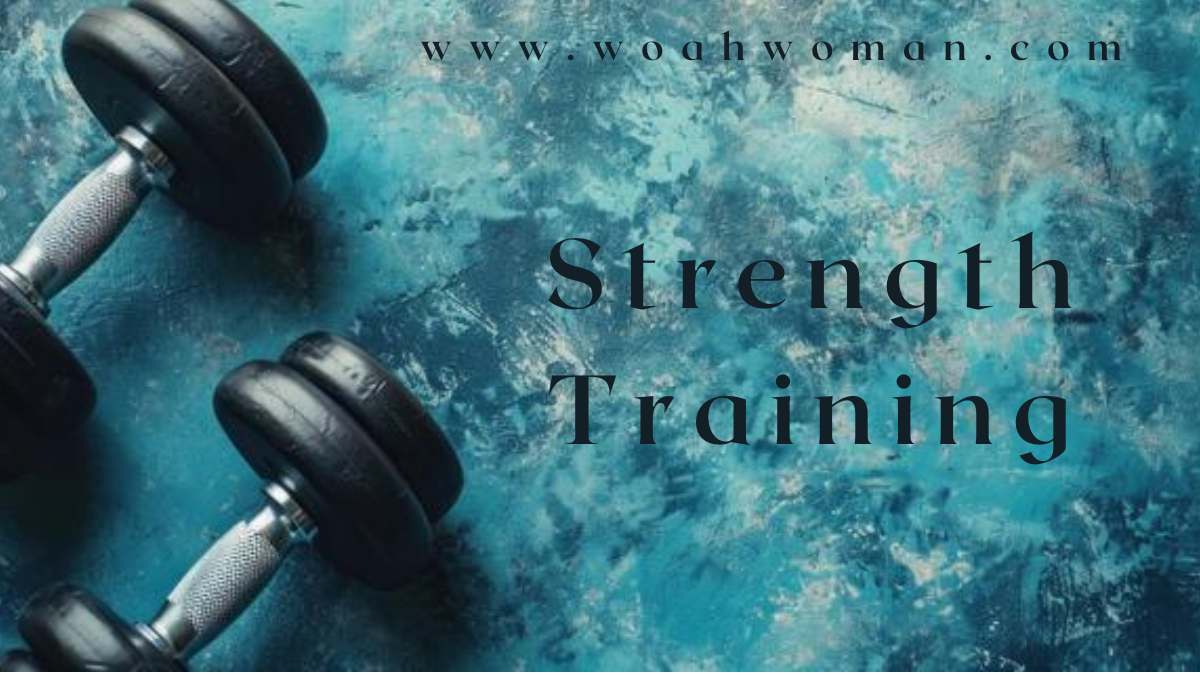Let me guess, you want to start with strength training. But, you’re daunted by all the machines that look like they could crush you? Or, you just don’t know where to start? That’s completely alright! Even the strongest weight-lifters and heavy-weight champions had to start somewhere.
Strength training is an important part of health, both physical and mental. It’s true, this form of exercise has long been associated with elite athletes and fitness enthusiasts. But in recent years, it’s become a staple for anyone looking to improve their physical health and mental well-being.
For beginners, the idea of lifting weights can seem intimidating. Nonetheless, with the right guidance, it’s an empowering journey toward a stronger, healthier you. This guide will walk you through everything you need to know to start strength training safely and effectively. Whether your goal is to build muscle, increase endurance, or simply enhance your overall fitness.
Why Strength Training Matters
Strength training isn’t just about building visible muscles; it’s about creating a healthier foundation for your body. It improves bone density, enhances metabolism, and promotes better posture. It’s also a powerful tool for boosting confidence and resilience. What’s not to like about it?
Here are a few key benefits:
- Burning Fat: Have some stubborn body fat you just want to get rid of? You’ve tried everything, but nothing works? Well, here’s something that will. Strength training increases your muscle mass, which in turn burns more calories, even when you’re not actually doing anything.
- Improved Mental Health: Studies show that resistance training can reduce symptoms of anxiety and depression. This is because exercising releases those ‘feel good endorphins’ that fight against those negative emotions.
- Injury Prevention: A stronger body essentially means that you have strong muscles and strong bones. It’s better equipped to handle the everyday stresses and can help prevent injuries. It won’t turn you into Superman, but it will make it so you don’t get hurt so easily.
- Stay Young: Better bone density and enhanced metabolism. Better posture and reduced blood pressure. Better cardiovascular health, lower cholesterol, and reduced back pain. I guess that’s the secret to immortality cracked. Well, not really immortality, but still you’ll look younger than you are, promise!
- Boost Confidence: You’ve mastered strength training, your body looks and feels better than ever, what’s not to feel confident about?
The Basics of Strength Training
Now, before you jump straight into lifting those weights. It’s very important that you understand the fundamental principles of strength training. Don’t worry, it’s not as complicated or lengthy as it sounds, and following these principles will give you better results.
1. What is Strength Training?
Strength training, to put it simply, involves exercises that are designed to increase your muscle strength and endurance. This is done by making you work against resistance. Wait, before I lose you, this is not a physics lesson! The resistance that I’m talking about is not something you have to calculate. It can come from weights, resistance bands, or even your own body weight.

But wait, these all sound like things that I can do at home. Exactly! You don’t have to join a gym for this (though I would recommend it at the start). It is possible to do strength training at home. You just have to have a well-rounded routine.
2. Key Components of a Strength Training Program
A well-rounded strength training routine typically includes:
- Warm-up: A 5-10 minute session of light cardio or dynamic stretches to prepare your body. Trust me, you do not want to skip this step. A warm-up should consist of things that get the blood flowing in all parts of your body. Like some simple stretches and then a fast-paced walk.
- Exercises: Movements targeting major muscle groups like legs, chest, back, arms, and core. What’s important to note is that you don’t want to target everything in one day. Choose one major muscle group to focus per day. Also, give yourself a break! You don’t have to work out 7 days a week, there should be a rest day.
- Cool-down: Stretching to improve flexibility and prevent soreness. This can be a repeat of your warm up, just remember, this is not to get your blood warmed up. Rather, it’s to cool down in a way that is healthy. It’ll actually allow you to get up in the morning.
How to Get Started
1. Set Realistic Goals
Ask yourself why you’re starting strength training. Are you looking to build muscle, tone your body, or improve overall health? Having a clear goal to work towards will help you tailor your workout routine to get the best results.
If you don’t know then that’s alright too. You can work through it, take an online quiz, talk to a trainer or your friends and family. Use the resources at your disposal and make sure to complete this step first. It really helps to have that motivation in front of you so you don’t stop half way through.
2. Learn Proper Form
Good form is essential for preventing injuries and ensuring you’re targeting the right muscles. This is very important! While it is very easy to start out, you need to know your body so you don’t injure yourself.
Part of that is learning everything first. You don’t have to start right away, the first few days or weeks can be about learning. You need to know the correct form, how to use each piece of equipment (if you are using any). In other words, be patient – slow and steady wins the race!
The most important advice here is to work with a trainer. Watching instructional videos to master the basics is all well and good but you need an actual professional there. It’s just to correct you if you’re doing it wrong, and that’s something a video can’t do.
3. Start Small
Sometimes, when starting new things, you just want to dive into the deep end, whatever the reason is. Whether it’s because of nerves or thinking that it won’t be that hard. Truth is, that type of mentality only works sometimes in certain situations. In terms of exercise, it’s actually not the best mentality to have.
Beginners should always start small! Try using lighter weights or bodyweight exercises first to help you build a proper foundation of strength. It’s better to gradually increase the resistance as your muscles slowly adapt. Also, wait at least 1 minute in between sets, more if you need it.
To be clear, it is a slow process. It’s not something that will happen overnight or in a week, so speaking honestly, get ready for a long journey.
4. Create a Schedule
It’s easy to lose track and motivation when you start something new, especially if it’s harder than expected. One way to solve that is to create a schedule. Commit to strength training 2-3 times a week to start with. But also, talk with a trainer to see the best time to work out. Don’t do it right after you’ve eaten! Working out with a full stomach never ends well.
This is very important!
Strength training puts a lot of pressure on your muscles and your body in general. This means when you’re starting out you shouldn’t do too much. You need to allow your muscles time to recover between sessions. Which is why it is recommended that you start with 2 sessions per week, gradually work your way to more.
Also, while it is true that each workout should last about 30-45 minutes, that’s more for intermediate strength trainers. When starting out from scratch, try doing it for 5-10 minutes first then working your way up to 30-45 minutes, or even more.
Beginner-Friendly Strength Training Exercises
Now, before you start you need to know the basics. There are multiple muscle groups that you can work (again, not in the same day!) using a variety of sets and reps.
Now the first question you probably have – what are sets and reps? Well, a rep (or repetition) is one complete exercise movement. A set is a certain number of reps, like a set of 10-15 reps.
Next question: what are the muscle groups? Well, you have your chest, back, arms, shoulders, biceps, triceps, abdominal, and lower body. That is to say your thighs and legs.
As a beginner, you should focus on 1 muscle group per day and only 2 workouts per week. Don’t overwork one muscle group and forget about the rest, that just leads to injuries.
1. Bodyweight Exercises
Perfect for beginners, these exercises require no equipment and can be done anywhere. Examples include:
- Push-ups: Great for your chest, shoulders, and triceps.
- Squats: Target your legs, glutes, and core.
- Planks: Strengthen your core and improve stability.
Pro Tip: You can even download apps and work along with those. They’ll help by telling you which exercises will target which muscle group.
2. Resistance Band Workouts
Want to step it up a bit? Then resistance bands are a budget-friendly way to add variety to your workouts. They’re portable and they provide adjustable resistance for exercises like bicep curls and leg extensions. Just make sure you get advice from a professional in getting the right one and using it correctly.

Pro Tip: You can still do the bodyweight exercises alongside these. It’s not one or the other, but it helps to change up your routine and keep things interesting.
3. Weight Lifting Basics
If you’re ready for a challenge and want to spice it up even more, then start using actual weights. Just remember to start with lighter weights or kettlebells to practice movements like:
- Deadlifts: Strengthen your lower back, hamstrings, and glutes.
- Overhead Presses: Work your shoulders and arms.
- Lunges: Target your legs and improve balance.
Pro Tip: Work with a trainer to start with. So they can help you get the hang of things, like how to use the equipment properly without risking injury. Once you’ve got it down, you can do it yourself at home. But you should always have a spotter with you, especially when lifting weights above your head.
Common Mistakes to Avoid
- Incorrect Clothing Options: Never wear open-toed shoes or loose clothing that can get caught on things. Always wear proper workout clothing and even weightlifting gloves if needed.
- Skipping the Warm-Up: Diving into exercises without warming up can increase the risk of injuries.
- Holding Your Breath: Always inhale before the lift and exhale during the lift. Never hold your breath.
- Lifting Too Heavy: Start with manageable weights to build confidence and avoid overstraining.
- No Spotter: Always have a spotter with you, especially when lifting weights above your head.
- Ignoring Pain: If you feel a stabbing pain somewhere, then don’t ignore it. Stop your workout immediately and seek medical help if it doesn’t go away.
- Neglecting Rest Days: Muscles grow and repair during rest, so don’t skip recovery days.
- Poor Nutrition: Strength training requires proper fuel, so prioritize protein-rich meals and stay hydrated.








